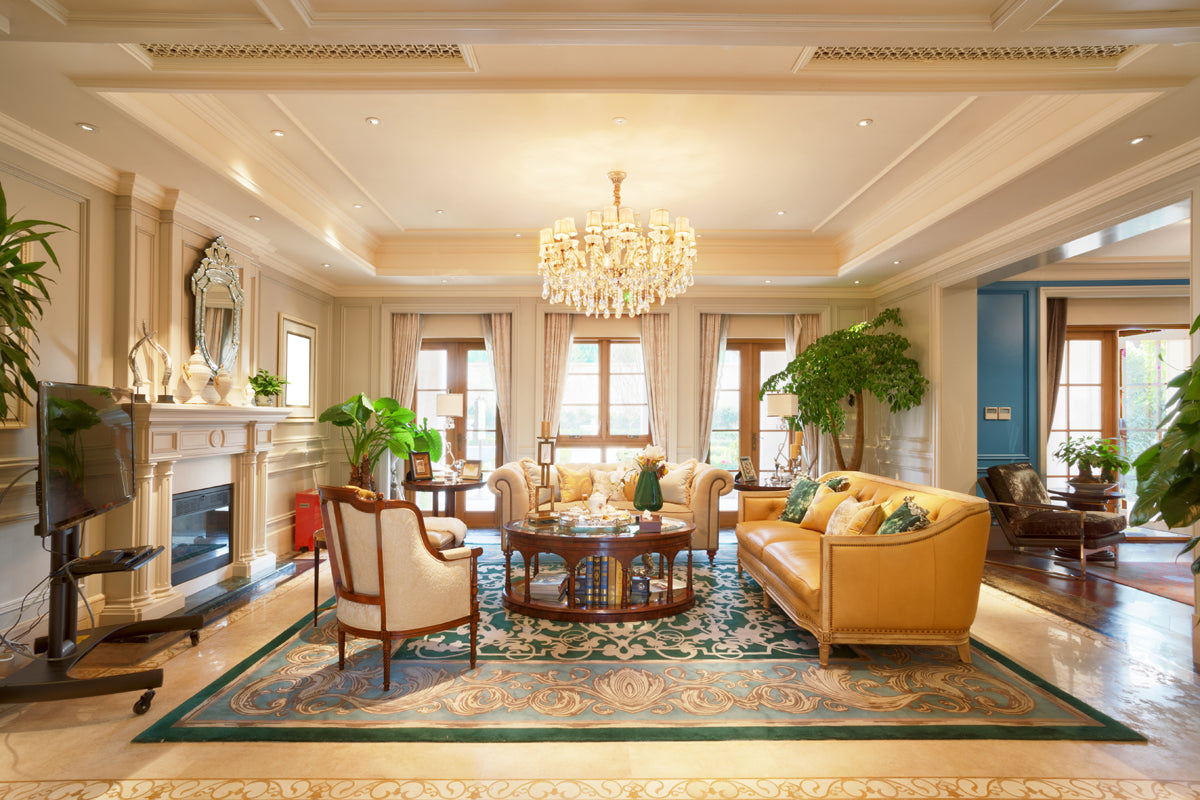On orders $99+
On orders $99+

Choosing the ideal light fixture size for a room involves understanding the room's size, purpose, and decor style. As a basic rule, for a single fixture in a room, add the room's length and width (in feet) to get the ideal diameter of the fixture (in inches). For a fixture over a table or island, it should be half to three-quarters the width of the table or island. Factor in ceiling height, room scale, and function as well. Remember, while these measurements provide a guide, your personal style and the fixture's harmony with the room's overall design are also critical.
Let's break this down.
While it may seem daunting, choosing the right size light fixture is an integral part of creating a harmonious and well-lit space. This article will guide you through the process of determining the best fixture size for different rooms, offering practical tips and rules of thumb to make the task less intimidating.
Understanding the Role of Light Fixtures
Light fixtures are more than mere sources of illumination. They also serve as a design element that can make a room feel complete. A fixture that's too small may be overpowered by the rest of the room, while a too-large fixture can overwhelm the space. Finding the right balance involves taking into account the size of the room, the room's purpose, ceiling height, and the size of your furnishings.

Light Fixture Sizing Basics
To start, let's cover a few basic calculations that can guide you in determining an ideal fixture size.
For a singular light fixture in a room: Add the length and width of the room in feet, and the resulting number can be the diameter of your fixture in inches. For instance, a room that's 10 feet wide by 12 feet long could accommodate a light fixture with a diameter of around 22 inches.
For a light fixture above a dining table or kitchen island: The diameter of the fixture should be between half and three-quarters the width of the table or island. For instance, for a 48-inch wide table, a fixture with a diameter between 24 to 36 inches would work well.
For multiple fixtures over a table or island: The size of each fixture should be about a third of the table or island width.

Factors to Consider when Choosing Light Fixture Sizes
While the basic calculations provide a starting point, there are additional factors to consider:
Ceiling Height: The higher the ceiling, the larger the light fixture can be. As a general rule, for every foot of ceiling height, the light fixture should be 2.5-3 inches high. Therefore, a room with a 10-foot ceiling could handle a light fixture 25-30 inches tall.
Room Size and Scale: Consider the size of the room and the furnishings in it. A larger room or a room with large-scale furniture can handle a bigger light fixture.
Purpose of the Room: Different rooms have different lighting needs. Kitchens and offices require brighter, task-oriented lighting, while bedrooms and living rooms typically benefit from softer, more ambient lighting.
Design Tips for Selecting Light Fixtures
Now that we've covered the technical aspects, let's dive into some design tips for choosing light fixtures:
Maintain Balance: Ensure your light fixture complements the room's style without overpowering it or getting lost. A well-chosen fixture will blend seamlessly with the room's decor, serving as a point of focus without detracting from other design elements.
Consider Style and Function: Your fixture's style should complement the room, and its function should suit the room's purpose. For instance, a chandelier might be perfect for a formal dining room, while pendant lights would work well over a kitchen island.
Try Layered Lighting: Incorporate a mix of ambient, task, and accent lighting in each room. This can involve a combination of fixtures like chandeliers, recessed lights, table lamps, and wall sconces.
Don't Be Afraid of Size: If you love a larger light fixture and it fits within your size parameters, don't be afraid to use it! It could serve as a stunning centerpiece in your room.

Choosing the ideal light fixture size involves more than just measurements; it's about blending style and function in a way that complements your room's overall design. By using these guidelines and trusting your instincts, you can select fixtures that not only illuminate your space but also add charm and character to your home. Remember, the goal is to create a space that reflects your unique style and serves your living needs comfortably. Happy designing!
Helpful Links:
Illuminating Harmony: The Art and Science of Layered Lighting
Leave a comment